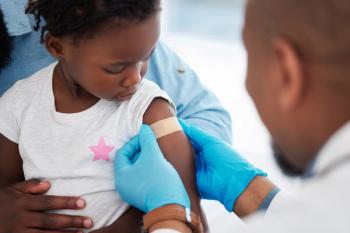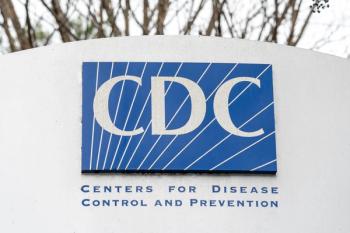
CDC reports highest number of pediatric influenza-associated deaths since 2009-10
Pediatric influenza-associated deaths for the 2024-25 season were second-highest recorded since becoming notifiable in 2004.
The 2024-2025 influenza season recorded 280 pediatric influenza-associated deaths, the second-highest number recorded since 2004 (when child deaths became nationally notifiable), according to a new publication of the Centers for Disease Control and Prevention's (CDC) Morbidity and Mortality Weekly Report (MMWR).
The 2009-2010 influenza A(H1N1)pdm09 pandemic recorded the highest number of pediatric deaths since 2004. According to the MMWR, approximately half of the children who died from influenza had an underlying medical condition, and 89% were not vaccinated.
The 280 deaths reported through September 13, 2025, represent a national rate of 3.8 deaths per 1 million children, with the median age at death being 7 years, with over 60% were under age 9 years. Additionally, the mortality rate was highest in children aged younger than 6 months (11.1 deaths per 1 million).
Influenza A viruses accounted for 86% of deaths, with A(H1N1)pdm09 and A(H3N2) both contributing substantially. Influenza B viruses accounted for 14% of cases.
Jonathan Miller, MD, a general pediatrician at Nemours Children’s Health and president of the Delaware Chapter of the American Academy of Pediatrics, emphasized that these findings reinforce the message that all children are at risk for serious influenza complications.
“Kids with high risk can have problems with influenza, but kids who are otherwise healthy can also have problems with influenza,”
Demographic characteristics
White children had the highest percentage of deaths (42%), but had the second-lowest death rate of 3.1, behind Asian children (2.8). Black or African American children experienced the highest mortality rate (5.8 per 1 million) despite representing 23% of all deaths. Females had a mortality rate of 4.5 compared to the 3.1 rate observed in males.
Vaccination status and underlying conditions
CDC found that among the 208 vaccine-eligible children with available information, 89% had not been fully vaccinated during the 2024–25 season. This continues a trend seen in past seasons, where most children who died from influenza had not received full vaccination.
Underlying conditions were common: 56% of children had at least one, most often neurologic conditions such as developmental delay. However, a significant proportion of deaths occurred in previously healthy children, underscoring the broad risks of influenza.
Clinical course and care settings
The median interval from symptom onset to death was 4 days. Nearly half of children who died had not been admitted to a hospital, and 22% died outside a hospital setting entirely. Children who died outside hospitals or in emergency departments had shorter illness courses and were less likely to have received antiviral treatment compared with hospitalized children.
Complications before death included shock or sepsis (50%), pneumonia (38%), and acute respiratory distress syndrome (28%). Bacterial co-infections were documented in 41% of tested children, with Staphylococcus aureus, Streptococcus pneumoniae, and group A Streptococcus most common.
Implications for pediatric practice
The CDC emphasized that annual influenza vaccination for all children aged 6 months and older remains the most effective strategy to prevent severe outcomes. Pediatricians play a critical role in reinforcing vaccine uptake, particularly in families where children have chronic health conditions or are at higher risk based on age.
Clinicians should also be alert to rapid clinical deterioration, especially in children without known underlying conditions who may not initially appear high-risk. The report noted that 40% of children who died had received antiviral treatment.
Looking ahead
The CDC reported that the 2024–25 influenza season was the first high-severity season since 2017–18, with an estimated 43 million illnesses, 560,000 hospitalizations, and 38,000 total deaths across all age groups. For pediatricians, the findings reinforce influenza’s ongoing threat and the importance of preventive and early intervention strategies.
“Influenza can cause serious illness and death in children; therefore, preventing infection, particularly among those who have underlying medical conditions, can reduce influenza-associated morbidity and mortality. All persons aged ≥6 months without a contraindication should receive an annual influenza vaccine,” the CDC stated. "Vaccinating children annually against influenza can help prevent severe illness and death."
Future influenza recommendations
In July, the The American Academy of Pediatrics (AAP) released its influenza vaccine recommendations for the 2025-2026 season, stating that all healthy people 6 months or older be vaccinated against influenza.2
Reference:
- Influenza-associated pediatric deaths — United States, 2024-2025 influenza season. MMWR. September 25, 2025. Accessed September 25, 2025. https://www.cdc.gov/mmwr/volumes/74/wr/mm7436a2.htm?s_cid=OS_mm7436a2_e&ACSTrackingID=USCDC_921-DM150591&ACSTrackingLabel=Week%20in%20MMWR%3A%20Vol.%2074%2C%20September%2025%2C%202025&deliveryName=USCDC_921-DM150591
- Fitch J. AAP recommends all healthy children 6 months or older receive influenza vaccine. Contemporary Pediatrics. Published July 28, 2025. Accessed September 25, 2025. https://www.contemporarypediatrics.com/view/aap-recommends-all-healthy-children-6-months-older-receive-influenza-vaccine
Newsletter
Access practical, evidence-based guidance to support better care for our youngest patients. Join our email list for the latest clinical updates.










